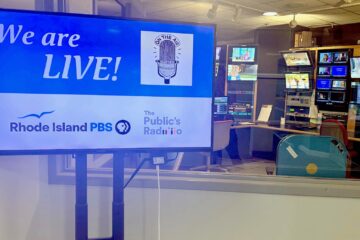FCC OKs noncommercial low-power FM over broadcasters’ objections
The FCC’s establishment of two low-power FM (LPFM) classes of stations — 10-watt and 100-watt — could populate radio dials with more than a thousand tiny noncommercial broadcasters, assuming the plan weathers possible challenges from Congress and existing broadcasters.
FCC officials say the initial LPFM proposal, unveiled a year ago, generated a record volume of public comment, with churches, high schools, minorities, microradio activists and others defending the plan against attacks from established broadcasters. The plan that won approval by a 4-1 vote is more modest than its predecessor. It nixed the idea of commercial LPFM stations — which may allow a boom in noncommercial radio beyond the reserved band. And it dropped the 1,000-watt class of low-power stations, allowing a max of 100 watts — broadcasting about three miles. Some markets with crowded dials can’t host even one 100-watt station; others can accommodate several.
Citing the consolidation boon in commercial radio, FCC Chairman William Kennard said LPFM will empower minorities, help schools train students in radio, and “spark a whole new outlet for creativity.”
The approval drew rare praise for the FCC from its harshest critics, including
the Prometheus Radio Project, a group of microradio activists who passed out
a press release headlined “For Once, We Win!” — and that was before the commissioners voted. “The corporate fatcats got used to thinking of the
airwaves as their own private fiefdom, but the commissioners today reaffirmed
that the airwaves will belong to everyone,” said Prometheus’s Joan D’ark.
“This action will justly return a small piece of the airwaves to the people
who own them—the citizens of the United States,” said Cheryl Leanza,
an attorney with the progressive Media Access Project. The United Church of
Christ, one group represented by MAP, quickly unveiled its Microradio Project,
created to help wannabe broadcasters buy equipment, apply for licenses, and
start programming. Their charges could have their chance in May, when the
FCC plans to open the application window.
FCC Commissioner Gloria Tristani, an ardent LPFM supporter, called Jan. 20
“a great day,” but many broadcasters disagree. NAB, NPR and CPB all opposed
the LPFM proposal with gusto. Along with the Consumer Electronics Manufacturers
Association, they produced receiver tests finding that LPFM would interfere
with their full-power signals. Studies by the FCC, MAP, and the National Lawyers’
Guild downplayed the threat of interference.
“It’s rare when you get NPR, NAB and CEMA to agree on anything,” said NAB
spokesman Dennis Wharton, “but on this one, we all have absolute knowledge
that this proposal is going to result in more interference on radio.” Even
FCC Commissioner Michael Powell, who approved LPFM with some reservations,
said he had “no idea” if low-power stations would cause interference. Broadcasters
also fretted that LPFM could sideline digital radio by further crowding the
radio dial.
NPR and CPB declined to comment on low power’s triumph until given a chance
to review the official order. But NAB President Edward Fritts reiterated the
threat of staticky signals. “The FCC has turned its back on spectrum integrity,”
he said in a press release. “This FCC has chosen advancement of social engineering
over spectrum integrity. It’s a sad day for radio listeners.” Spokesman Wharton
said NAB is considering a court challenge and seeking support for legislation
to block LPFM, already introduced by Rep. Michael Oxley (R-Ohio).
Key points of the approved LPFM plan:
- Low-power stations must be noncommercial — operated by schools, churches,
educational nonprofits, public safety groups, governmental organizations
and the like. They will follow the same underwriting rules as public radio
stations, and the FCC won’t use auctions to resolve competition for frequencies. - The FCC will license two kinds of low-power stations: 50-100 watt stations,
strong enough to cover about three miles, and 1-10 watt stations, which
will have a range of a mile or two. The FCC decided 1,000-watt stations
are “not in the public interest.” - Low-power stations won’t have to observe the mileage separation rules
that protect full-power FM stations from interference by stations using
“third adjacent” channels—those that are three channels away. Under
that rule, full-power stations at 90.9 MHz already must be a minimum land
distance away from others at 90.1, three channels away. But a low-power
FM station at 90.9 won’t have to keep a distance from stations at 90.1.
The FCC retained its mileage separation rules protecting stations that are
two channels away. - Existing broadcasters and media entities can’t take advantage of LPFM.
And translators are also barred, “to encourage locally originated programming,”
the FCC says. - Only local broadcasters will run LPFM stations, and, when applying, the
more local, the better. In selecting among applicants, the FCC will give
extra weight to those that have been in their areas for at least two years
and will air at least eight hours of locally originated material per day. - Current radio pirates and former pirates who ignored FCC orders to shut
down won’t be allowed to get LPFM licenses. - Like full-power noncommercial stations, low-power stations will have
to be on the air at least 36 hours a week. The FCC will ease some of these
rules in the future. At first, each broadcaster will be able to own only
one station at a time, but after two years, they can snap up five, and in
three years, ten. And non-local broadcasters will be able to start low-power
stations in two years. If the FCC’s plan stays on track, would-be low-power
operators will be able to apply for 100-watt frequencies during a five-day
window in May. Ten-watt stations will be parceled out in a later round.
With comments in, LPFM debate is far from settled
The FCC has started private deliberations on its controversial low-power
FM (LPFM) proposal after receiving more than a thousand public comments on
the issue. Its eventual decision probably will be just as controversial.
In January, the FCC proposed licensing a new class of FM stations from one
watt to a maximum of 1,000 watts — enough power to reach up to nine miles.
A variety of groups applauded the idea, including schools, churches, lawmakers,
political progressives and microradio supporters.
“Our mission is to make sure that the American public can hear diverse points
of view in order to fulfill their First Amendment rights,” says Cheryl Leanza,
deputy director of the Washington, D.C.-based Media Access Project (MAP), a
nonprofit law firm representing LPFM supporters. “Low power radio is a perfect
example of the way to fulfill that mission.” In letters to the FCC, many LPFM
supporters said low-power stations would counter the widespread media consolidation
spawned in part by the Telecommunications Act of 1996.
“I think consolidation has really killed off the chances for people to get
those opportunities. It’s very disappointing to me,” says Jeremy Lansman,
a community radio pioneer who now owns a TV station in Anchorage, Alaska.
Lansman has been working independently to prove that low-power FM stations
are technologically feasible.
But the proposal riled established broadcasters, especially in public radio,
where opponents say their quieter fare of news and classical music are especially
likely to suffer interference from low-power stations. They also fear the
FCC would not protect the translators and repeaters that expand public radio’s
reach to rural areas from low-power stations.
“If there’s an opportunity for a diversity of voices … we’re interested,”
says Rick Madden, v.p. for radio at CPB, but adds, “We do not believe that
should come at the technical expense of a loss of signal for whoever listens
to the signals they now listen to.”
LPFM opponents are most concerned about the FCC’s proposal to allow for more
low-power stations by weakening regulations that protect full-power FM stations
from interference. Called adjacency protections, the rules impose mileage
separations between antennas if their frequencies are within 0.6 megahertz
of each other. For example, current rules require an FM station at 90.9 MHz
to keep a minimum land distance from a station at 90.3. But the FCC has suggested
waiving those rules for low-power stations.
That’s sparked the most intense scrutiny of the LPFM proposal, with at least
five different studies of the matter adding to the debate. Some of the studies
test radios to duplicate low-power station interference, and, predictably,
each group’s study supports its views. Studies from the National Lawyers’
Guild (NLG) and the Media Access Project, progressive groups that support
LPFM, claim LPFM is doable. The FCC’s own study draws the same conclusion.
NAB tests and a joint study for CPB, NPR and Consumer Electronics Manufacturers
Association (CEMA) support current protections and express doubt about LPFM’s
ultimate value.
The studies fall roughly into opposing camps. But it’s hard to compare them
individually, says Doug Vernier, an engineering consultant and director of
broadcasting services at KUNI-FM in Cedar Falls, Iowa, because they use different
radios and definitions of interference.
After analyzing the studies, Vernier came out in support of the CEMA and
NAB tests and against removing protections for existing stations. “The volume
of work done on these studies are certainly the most credible,” he says. However,
Vernier’s consulting firm found low-power stations could be added in small
markets without the FCC weakening current adjacency protections. Like Vernier,
even LPFM’s outspoken supporters concede that large markets have little room
for low-power stations, and people on both sides of the issue doubt the feasibility
of 1,000-watt stations.
Pubcasters are also concerned about LPFM’s effects on digital radio (also
called digital audio broadcasting or DAB). The leading technology for digital
radio—in-band, on-channel (IBOC)—would fully occupy the FM channel
to its outer edges. CPB officials say that would make them even more susceptible
to interference from added low-power stations.
In comments filed with the FCC on Nov. 15, NPR wrote, “Given the importance
of DAB, retaining the existing interference protections is essential both
to determine the feasibility of IBOC DAB and, assuming the viability of one
or more of the proposed IBOC DAB systems, to permit a rapid and non-disruptive
transition to an IBOC DAB system. To do otherwise would be to … effectively
foreclose an IBOC DAB transition.”
CPB’s Madden takes issue with the FCC’s handling of the low-power FM proposal.
“The logic would be, it would seem to me, that they would do the digital rulemaking
first, then the low-power rulemaking,” he says. “Instead, they did the low-power
rulemaking first, did not release their engineering studies of analysis until
after the deadline for filing comments on that, and then, before the low-power
rulemaking process was completed they released their digital rulemaking.”
Madden and others in public radio deny that their opposition to the LPFM
proposal means they don’t care about serving minorities, as some politically
progressive low-power supporters have alleged. “We certainly believe in the
diversity of voices,” he says. “We have demonstrated that belief by investing
millions in minority-controlled and -operated stations around the country.
We’ve created the Satelite Radio Bilingüe and AIROS. So we believe in all
of that and matched the rhetoric with action.”
Now that the FCC has stopped taking public comments on LPFM, commissioners
are working with the agency’s Mass Media Bureau to review the comments and
decide what to do next. The commission could approve LPFM, abandon it entirely,
or refine its initial proposal and ask for more comments. When it issued the
proposal in January, four of the five commissioners supported it, though two
supporters, Susan Ness and Michael Powell, expressed concern about LPFM’s
effect on existing signals and digital radio.
In addition, Reps. Billy Tauzin (R-La.) and Michael Oxley (R-Ohio) have come
out against the FCC proposal. Oxley even introduced legislation to bar it
entirely, but Congress adjourned before acting on his Radio Broadcasting Preservation
Act of 1999.






